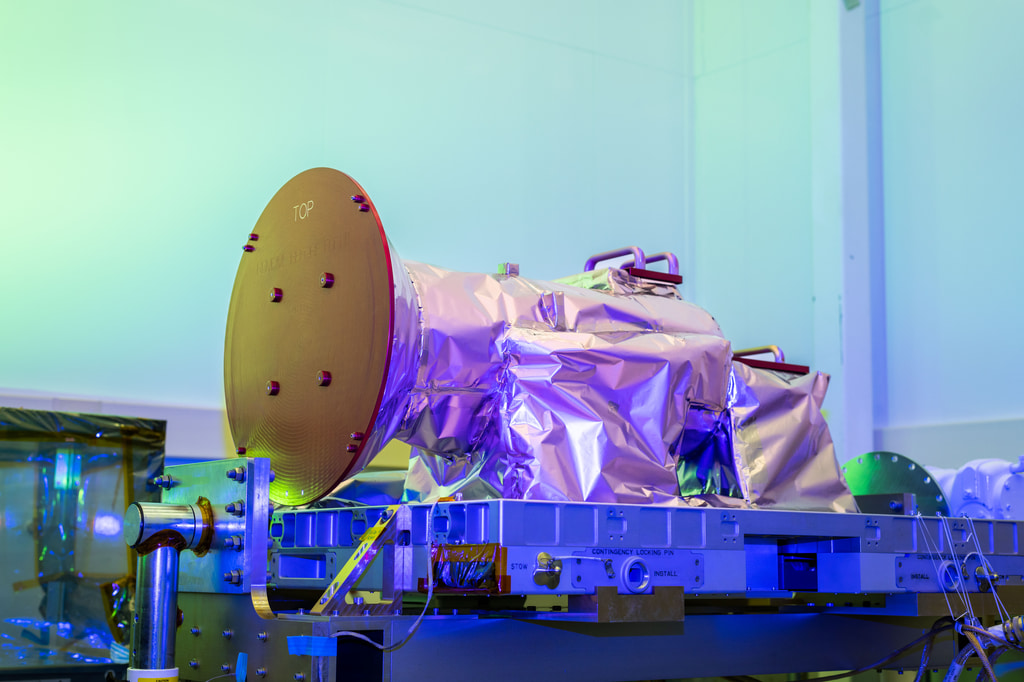Atmospheric Waves Experiment (AWE)
Overview
From its unique vantage point on the International Space Station, NASA’s Atmospheric Waves Experiment (AWE) will look directly down into Earth’s atmosphere to study how gravity waves travel through the upper atmosphere. Data collected by AWE will enable scientists to determine the physics and characteristics of atmospheric gravity waves and how terrestrial weather influences the ionosphere, which can affect communication with satellites.
AWE is led by Michael Taylor at Utah State University in Logan, and it is managed by the Explorers Program Office at NASA’s Goddard Space Flight Center in Greenbelt, Maryland. Utah State University’s Space Dynamics Laboratory built the AWE instrument and will provide the mission operations center.
AWE Imagery
Atmospheric Waves Experiment (AWE) Beauty Pass
Go to this sectionFrom its unique vantage point on the International Space Station, NASA’s Atmospheric Waves Experiment (AWE) will look directly down into Earth’s atmosphere to study how gravity waves travel through the upper atmosphere. Data collected by AWE will enable scientists to determine the physics and characteristics of atmospheric gravity waves and how terrestrial weather influences the ionosphere, which can affect communication with satellites. AWE is led by Michael Taylor at Utah State University in Logan, and it is managed by the Explorers Program Office at NASA’s Goddard Space Flight Center in Greenbelt, Maryland. Utah State University’s Space Dynamics Laboratory built the AWE instrument and will provide the mission operations center.
Atmospheric Waves Experiment (AWE) Media Resources
Go to this pageFrom its unique vantage point on the International Space Station, NASA’s Atmospheric Waves Experiment (AWE) will look directly down into Earth’s atmosphere to study how gravity waves travel through the upper atmosphere. Data collected by AWE will enable scientists to determine the physics and characteristics of atmospheric gravity waves and how terrestrial weather influences the ionosphere, which can affect communication with satellites.AWE is led by Michael Taylor at Utah State University in Logan, and it is managed by the Explorers Program Office at NASA’s Goddard Space Flight Center in Greenbelt, Maryland. Utah State University’s Space Dynamics Laboratory built the AWE instrument and will provide the mission operations center.Visit https://science.nasa.gov/mission/awe/ to learn more. Watch AWE launch aboard NASA's SpaceX Cargo Dragon. Download isolated launch views of NASA's SpaceX CRS-29 mission. ||
Upper Atmosphere
Airglow Imagery
Go to this pageAirglow occurs when atoms and molecules in the upper atmosphere, excited by sunlight, emit light in order to shed their excess energy. The phenomenon is similar to auroras, but where auroras are driven by high-energy particles originating from the solar wind, airglow is sparked by day-to-day solar radiation. Airglow carries information on the upper atmosphere’s temperature, density, and composition, but it also helps us trace how particles move through the region itself. Vast, high-altitude winds sweep through the ionosphere, pushing its contents around the globe — and airglow’s subtle dance follows their lead, highlighting global patterns. ||
Atmospheric Gravity Waves Imagery
Go to this pageAtmospheric gravity waves are similar to what happens when you drop a stone into a calm pond, but they roll through the air and cloud tops instead of water. Just like waves form in the ocean or a lake when water is disturbed, waves also form in the atmosphere when air is disturbed. They form when air is forced upward by hills or mountains into a layer of stable air in the atmosphere. Gravity causes the air to fall back down, and it begins to oscillate, creating a ripple effect. Wind flowing over the Rocky Mountains, for example, can create gravity waves that are felt as turbulence on an airplane. ||



